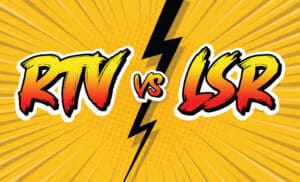With the recent flight for the first private docking to the international Space Station, it brings to mind the versatility of liquid silicone injection molding, both on Earth and in space. The unmanned launch by private company SpaceX is the first automated mission with the robotic spaceship Dragon and Falcon 9. According to Elon Musk, chief designer and founder of SpaceX CEO, the first trip was primarily planned as a demonstration flight, carrying various experiments, basic supplies and consumables.
Rubber Molding in Space
While liquid silicone injection molding is used in a variety of innovative projects in many different industries, it is frequently incorporated as rubber keypads, rubber grommets, precision molding for wire conductors and as gaskets in various parts of spacecraft and aircraft. It is used for both private aeronautic and military silicone rubber molding. The National Aeronautics and Space Administration (NASA) has worked with SpaceX designers and engineers to create a spacecraft that will one day be able to carry both objects and people into space through manned and unmanned missions. An important part of those flights will be the sturdy design and critical components of liquid silicone injection molding used in aeronautics.
Components
Rubber molding products play an important role in space flight craft. There are many features that make it practical and ideal for the demanding environment. Both private and military silicone rubber molding designs are used to create intricate pieces that fit precisely into the hull and interior. Grommets, for example, can hold important panel and interior pieces together. Liquid silicone injection molding provides a seal with gaskets that prevent air, liquid and other elements from leaking, penetrating or escaping.
Shape Retention and Properties
Rubber molding is known for its high heat resistance. Unlike plastics, wood-based materials and some metals, silicone rubber molding components can retain their shape at extreme temperatures. Liquid silicone injection molding also has biologically inert properties, which makes it safe for space travel. It can also withstand high altitude pressure and weightlessness, two characteristics critical to space flight. Imagine if the intricate pieces that enabled electrical wiring or communications were made of components that melted or lost their shape as the spacecraft traveled to the International Space Station. The vehicle would likely malfunction.
Cost
Consider the fact that silicone rubber molding is relatively inexpensive to manufacture and is much cheaper than other materials that could probably do the job, but at a much higher cost. Multiple pieces can be created in one run if necessary, which would further reduce production costs.
Silicone rubber
Precision colors allow the gaskets and sealers to blend in to the design for a sleek and uniform look. Rather than requiring paint or staying one color, precision colors can be implemented during the molding process.
As we delve deeper into private space flights and the manufacture of private spacecraft, the use of liquid silicone injection molding will likely grow. When the time comes for more space flights, look for rubber keypads, grommets and gaskets to be in place front and center and behinds the scenes.








